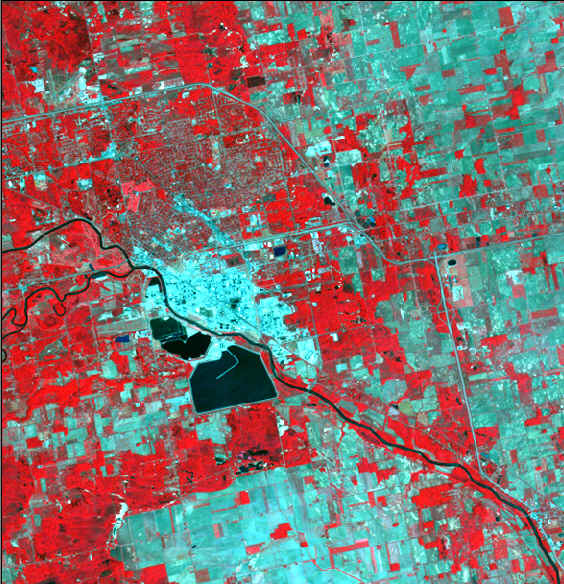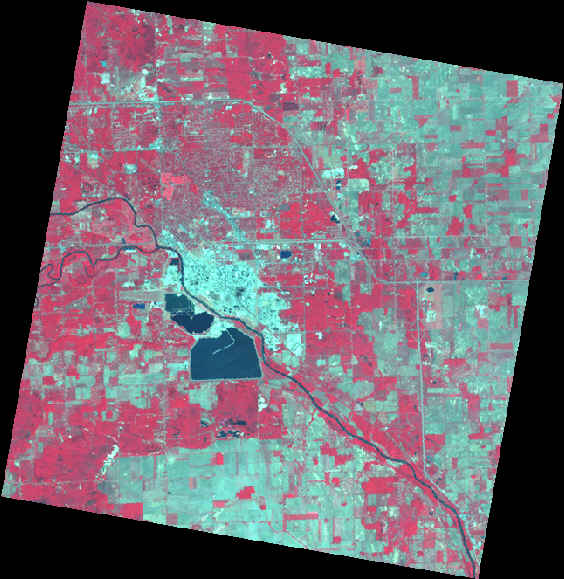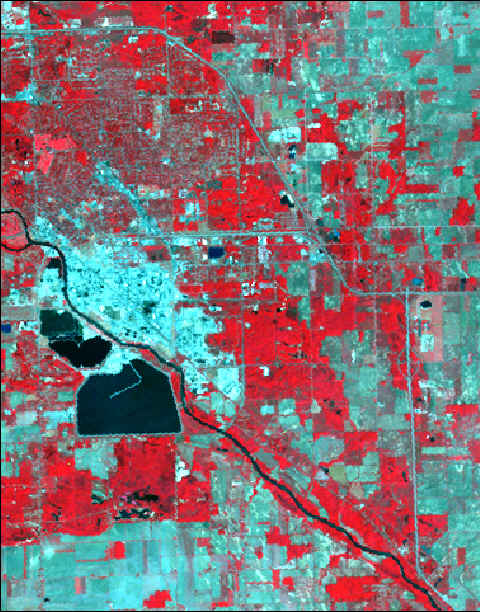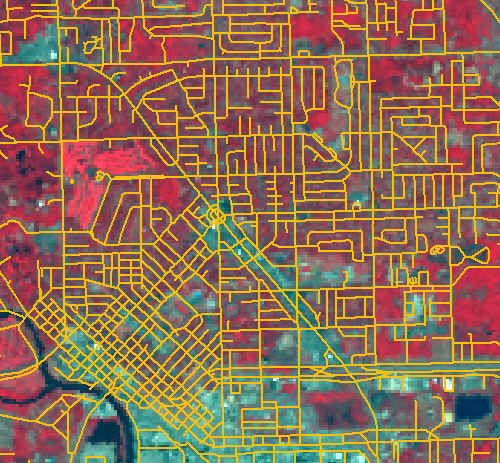|
1 Image 1. This is
the original subset image before rectification, showing TM bands 4,3,2
(RGB). Vegetation appears red because of its high response in the
reflected infrared region of the spectrum (Band 4). Ground control
points were selected at various road intersections spread relatively
evenly around the entire image area. 2 Image 2. This is
the original subset image after rectification, again with bands 4,3,2
(RGB). As you can see, the orientation of the image has changed
since it is now projected into UTM coordinates. The contrast is
different in this image because the black areas around the perimeter
affect the contrast stretch applied in ERDAS. 3 Image 3. This is
a subset of the rectified subset, which was done to eliminate the black
areas around the perimeter. This is the image that was spectrally
enhanced and later classified. The contrast has returned to normal
with the removal of the black areas. 4 Image 4. This
image was created in ArcView GIS. It shows a magnified portion of
the rectified image with an overlaid GIS layer of the Midland street
network. The street information is part of a TIGER file that was
downloaded from http://www.esri.com/. Remember that
the RMSE of 0.4640 was an indicator that this was a successful
rectification. An even better one is that the street network layer
matches perfectly with the image underneath. Notice how the streets
outline features such as the Country Club, patches of forest, urban areas,
etc. The success of this rectification means that the image will now
match up correctly with any GIS layer in the UTM projection.
|



